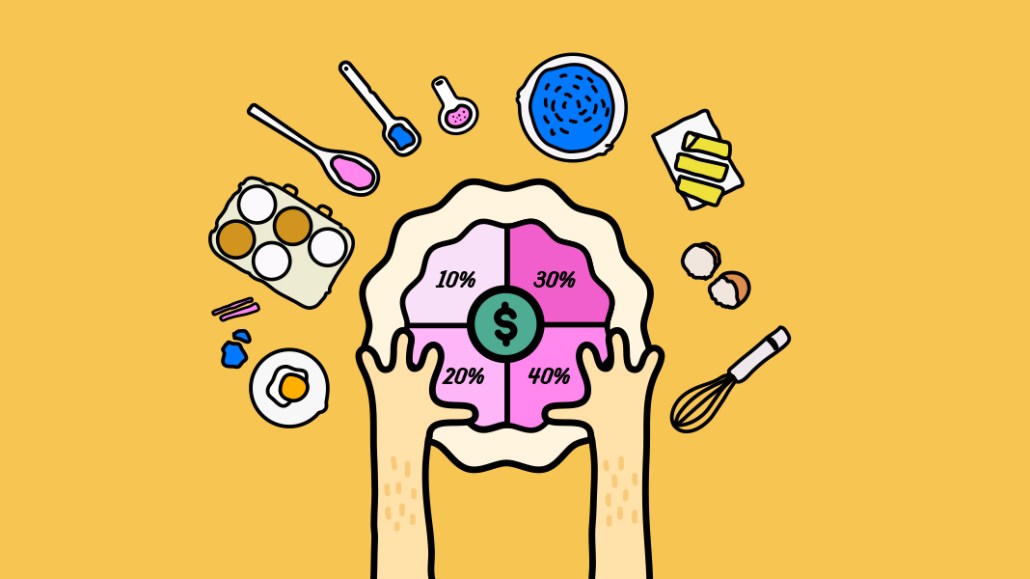Save 50% on a 3-month Digiday+ membership. Ends Dec 5.
‘Outside the four walls of a restaurant’: Why The Infatuation cooked up a marketplace model during the pandemic

Last week, the food and dining-focused publisher The Infatuation added something notable to its menu, rolling out its first marketplace of goods and services.
Called Outpost, the marketplace offers a mix of over 60 different products and services, many of them Infatuation exclusives, across a wide range of prices. A customer can get an “anti-social brunch” for two for just $50, or spend $5,130 on a four-person, white truffle-focused meal celebrating the feast of St. Vincent, the patron saint of Champagne. The independent, venture-backed The Infatuation takes a cut of about 8% of each sale, though its share differs depending on the product.
Outpost’s initial revenue impact is likely to be limited — it is available in just one of the 12 cities that the Infatuation covers (New York City), and it will not supplant or replace the brand partnerships and experiential businesses that drive most of the Infatuation’s revenue, CEO Chris Stang said. But Outpost is part of a much bigger move into commerce that it expects to continue, even after in-person dining and events start to become normal again next year.
“We think demand [for Outpost] exists in a post-COVID world,” said Nell Potter, who heads up Outpost in addition to serving as general manager of Zagat, which the Infatuation bought from Google in 2018. Potter said that she thinks Outpost could expand into Chicago and Los Angeles next.
The idea for Outpost first emerged this summer, Potter said, as she and her colleagues were trying to figure out ways to serve the Infatuation’s audience as restaurants stayed closed to in-person dining and brands remained leery of sponsoring large gatherings. Earlier that year, in April, the Infatuation had laid off 15 of its 90 employees.
“We started thinking about the opportunities that exist outside the four walls of the restaurant,” Potter said. “We knew that our audience missed going to restaurants; they were missing the way to interact on a deeper level.”
So a team led by Potter began reaching out to small pockets of the Infatuation’s newsletter subscribers to gauge their interest in different kinds of services, ranging from virtual classes to curated grocery boxes.
Ad position: web_incontent_pos1
Over time, the possibility of a marketplace emerged, though its offerings have changed as the second wave of coronavirus has built. At the outset, Potter said that Outpost had been evenly balanced between in-person experiences and goods, but today offerings are more tilted toward goods or virtual offerings, all offered by restaurants or culinary talents that the company has already vetted.
Like every other consumer-facing publisher, the Infatuation made some big changes this year to adapt. Its events and experiences business, which played a key role in both its advertising and membership businesses — the company hosted more than 65 events in 2019 — had to scale back dramatically in the face of local coronavirus restrictions.
“Being that our business is covering restaurants, a lot changed really quickly,” Stang said. “We had to help people make decisions inside their home, not just outside their home.”
Some of that has meant moving staff into different roles. The staff that helps maintain Outpost, for example, came over from the Infatuation’s event production staff, Potter said; an outside consultant helps manage the restaurant side of the marketplace.
Some of it has meant re-purposing existing products. For example, Text Rex, the Infatuation’s members-only restaurant recommendation text message service, has been recast as a service that allows members to ask for cocktail or drinking advice from bartenders or sommeliers.
Ad position: web_incontent_pos2
Historically, few media companies have explored marketplace models because of the significant infrastructure they require. But if advertising continues to challenge most publishers, more, especially those that have authority and vertical focus, may consider them, said Joe Procopio, a serial entrepreneur who currently counsels founders.
“Content and product are starting to merge into this one single thing,” Procopio said. “It’s good that they’re [The Infatuation] starting to explore their reviews as a kind of content marketing engine.”
Publishers’ expertise in attracting audiences and building loyalty among them solves one of the biggest problems most businesses have. And offering a new way to leverage the expertise and recommendation at the heart of the Infatuation’s brand could make sense.
“It’s going to take a lot of infrastructure to support,” Procopio said. “But they’re centering it right.”
More in Media

Digiday+ Research Subscription Index 2025: Subscription strategies from Bloomberg, The New York Times, Vox and others
Digiday’s third annual Subscription Index examines and measures publishers’ subscription strategies to identify common approaches and key tactics among Bloomberg, The New York Times, Vox and others.

From lawsuits to lobbying: How publishers are fighting AI
We may be closing out 2025, but publishers aren’t retreating from the battle of AI search — some are escalating it, and they expect the fight to stretch deep into 2026.

Media Briefing: Publishers turn to vertical video to compete with creators and grow ad revenue in 2026
Publishers add vertical video feeds to their sites to boost engagement, attract video ad spend and compete with news creators.
Ad position: web_bfu




